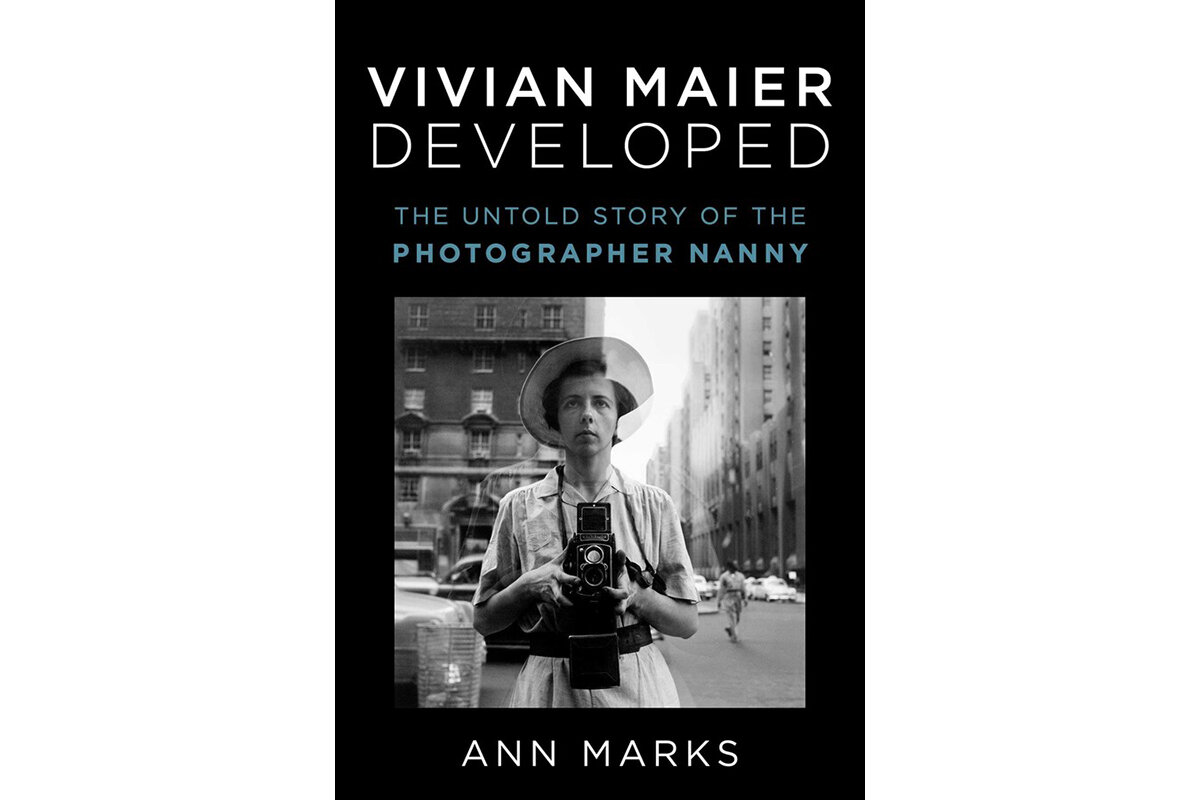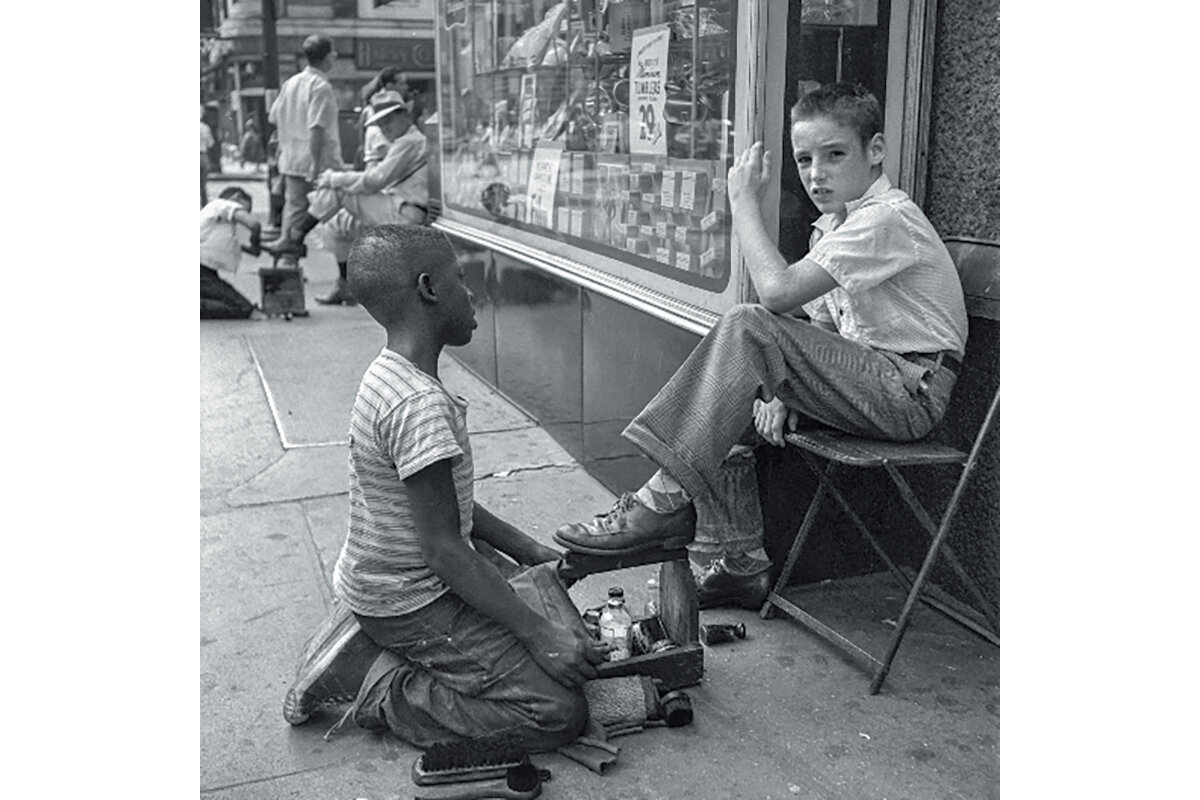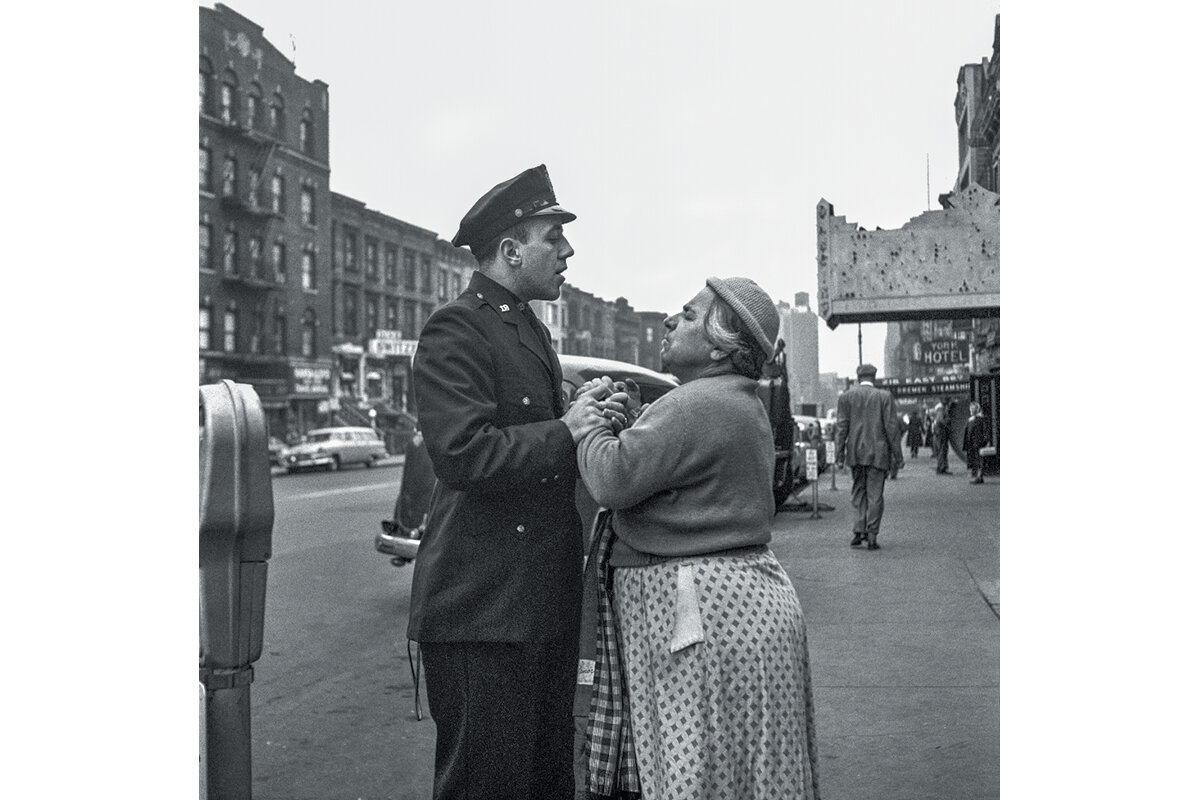Who was Vivian Maier? Book explores mysterious ‘photographer nanny.’
Loading...
Even when she was alive, Vivian Maier was difficult to fathom. Ann Marks’ new biography, “Vivian Maier Developed: The Untold Story of the Photographer Nanny,” begins with a list of the contradictory descriptions offered by those who knew her, including “Caring/Cold,” “Feminine/Masculine,” and “Mary Poppins/Wicked Witch.”
Many more people have become interested in understanding Maier since her death. For those unfamiliar with the story: In 2007, an amateur historian named John Maloof purchased a collection of abandoned boxes at a foreclosure auction at a Chicago storage facility. The boxes contained thousands of photographs that he believed to be of significant quality. He knew the property belonged to a Vivian Maier, but he was unable to uncover any information about her until her obituary appeared in 2009, confirming that she had been both a photographer and a nanny.
Maloof began sharing some of Maier’s images online. She became an immediate sensation, posthumously hailed as one of the great street photographers of the 20th century. Maloof went on to direct the 2014 Oscar-nominated documentary “Finding Vivian Maier”; Marks, a retired corporate executive, saw the film and became consumed with investigating its many lingering questions.
Why We Wrote This
What makes someone pursue her art with evident passion, and yet be uninterested in the results? A biography explores this riddle in the life of a reclusive street photographer whose work exudes “humanity, humor, and beauty.”
“Vivian Maier Developed” is the result. The compelling book benefits from Marks’ dogged research and from her collaboration with Maloof and Jeffrey Goldstein, another early collector. A previous Maier biography, Pamela Bannos’ “Vivian Maier: A Photographer’s Life and Afterlife,” portrays Maloof in an unflattering light and was written without access to the vast body of the photographer’s work. Marks, on the other hand, pored through Maloof and Goldstein’s combined archive of 140,000 photos, selecting 400 images to include in the book.
Using a Rolleiflex camera, which is positioned at the hip, Maier – who was born in 1926 and lived in New York City, her mother’s native France, and Los Angeles before settling in Chicago – made herself inconspicuous. She shot photos of people of all races and classes, crime scenes, celebrity events she pushed her way into (Muhammad Ali, Greta Garbo, and John F. Kennedy are among her famous subjects), and her young charges throughout the years.
The author is an unabashed admirer of her apparently self-taught subject. Of Maier’s photography, which spanned five decades, Marks writes, “With intelligence, creativity, passion, and a great eye, Vivian developed a massive and broadly relatable portfolio reflecting the universality of the human condition.” Elsewhere she refers to the photos’ “humanity, humor, and beauty.”
In addition to featuring Maier’s photography, Marks tackles the central mystery that has remained since the discovery of her work: why she pursued photography with such evident passion yet was uninterested in sharing her photographs. (She only printed 5% of her images, with the rest of the discovered archive in the form of negatives or undeveloped film, meaning that Maier herself never saw the vast majority of her work.)
Marks, who details her investigative and genealogical methods in the book’s useful appendices, spent years researching Maier’s family and the people who appeared in the photographs, chasing down all manner of leads.
Her task was made even more difficult by the fact that Maier was impenetrable, refusing to divulge information about her past to employers and acquaintances. She had few friends.
The author traces Maier’s family tree back several generations, uncovering a history of divorce, neglect, abandonment, and violence. Maier was raised mostly by her difficult and narcissistic mother but had little contact with her as an adult. She was even more distanced from her father and her sole sibling, a brother diagnosed with mental illness. Marks speculates on possible abuse in her past, given her strong aversion to physical or emotional closeness.
Many of the specifics of her life will remain unknown. What is germane to Marks’ project, however, is that by the late 1960s, Maier had developed what the author calls a textbook case of hoarding. Former employers recall their nanny’s boxes of newspapers, books, and photographic supplies not only filling her room but taking over their attics and garages as well. Her storage lockers contained a staggering 8 tons of such material.
Marks concludes that the hoarding disorder explains Maier’s refusal to show her work. “Even if Vivian wanted to disseminate her photographs,” she writes, “she was unable to let them go.”
Still, throughout the book, Marks argues that Maier was not unhappy or unfulfilled, describing her as “mostly upbeat, action-oriented, engaged, and well-informed, perpetually living life on her own terms.”
This cheerful interpretation doesn’t always square with the reclusive woman that Marks herself has described. Nor does it square with some of the images reproduced in the book, in which Maier appears in sinister silhouette.
This fascinating biography reveals much about the enigmatic artist, but parts of her will likely remain in shadow, as inaccessible in life as in those disquieting self-portraits.









